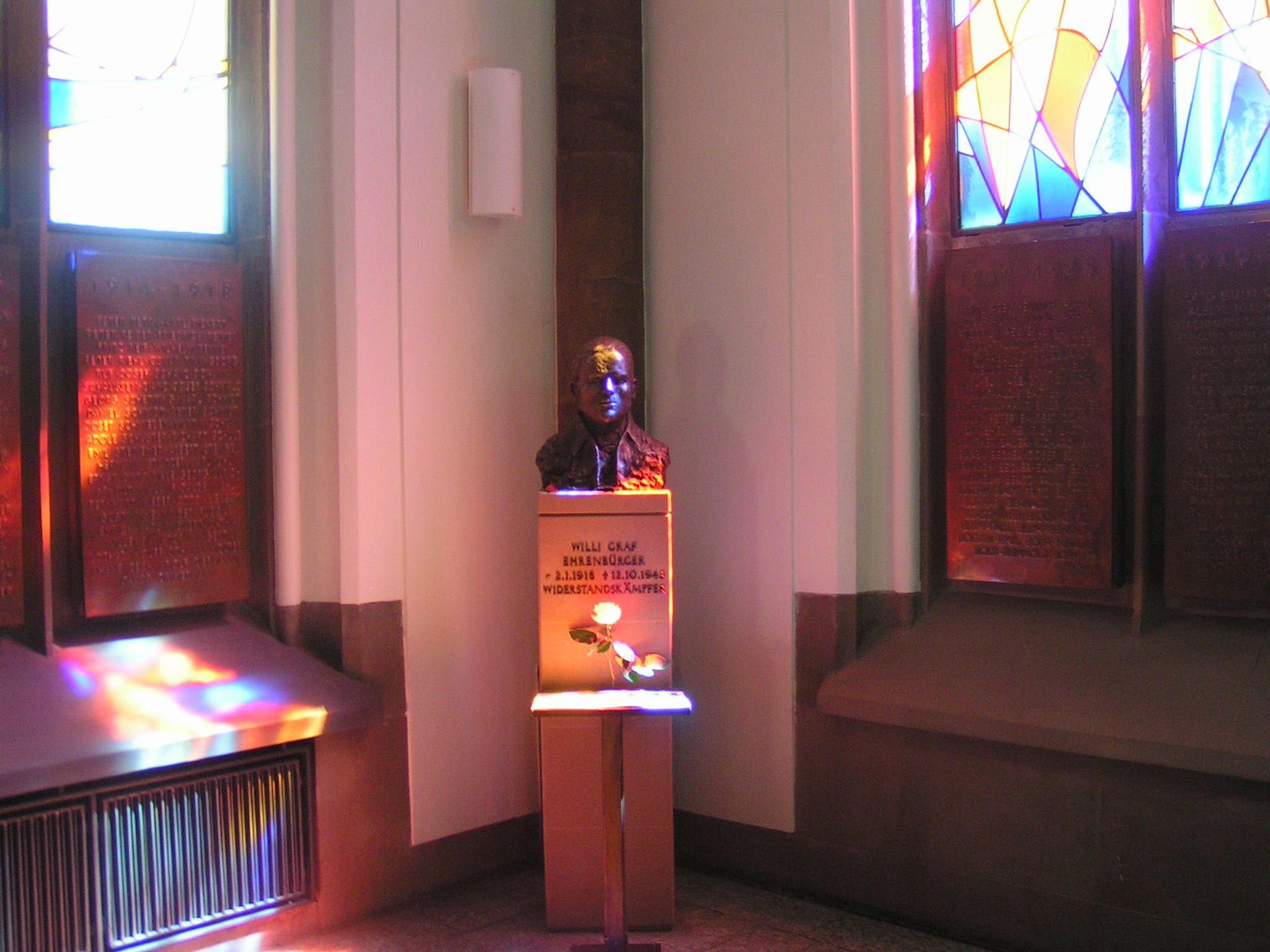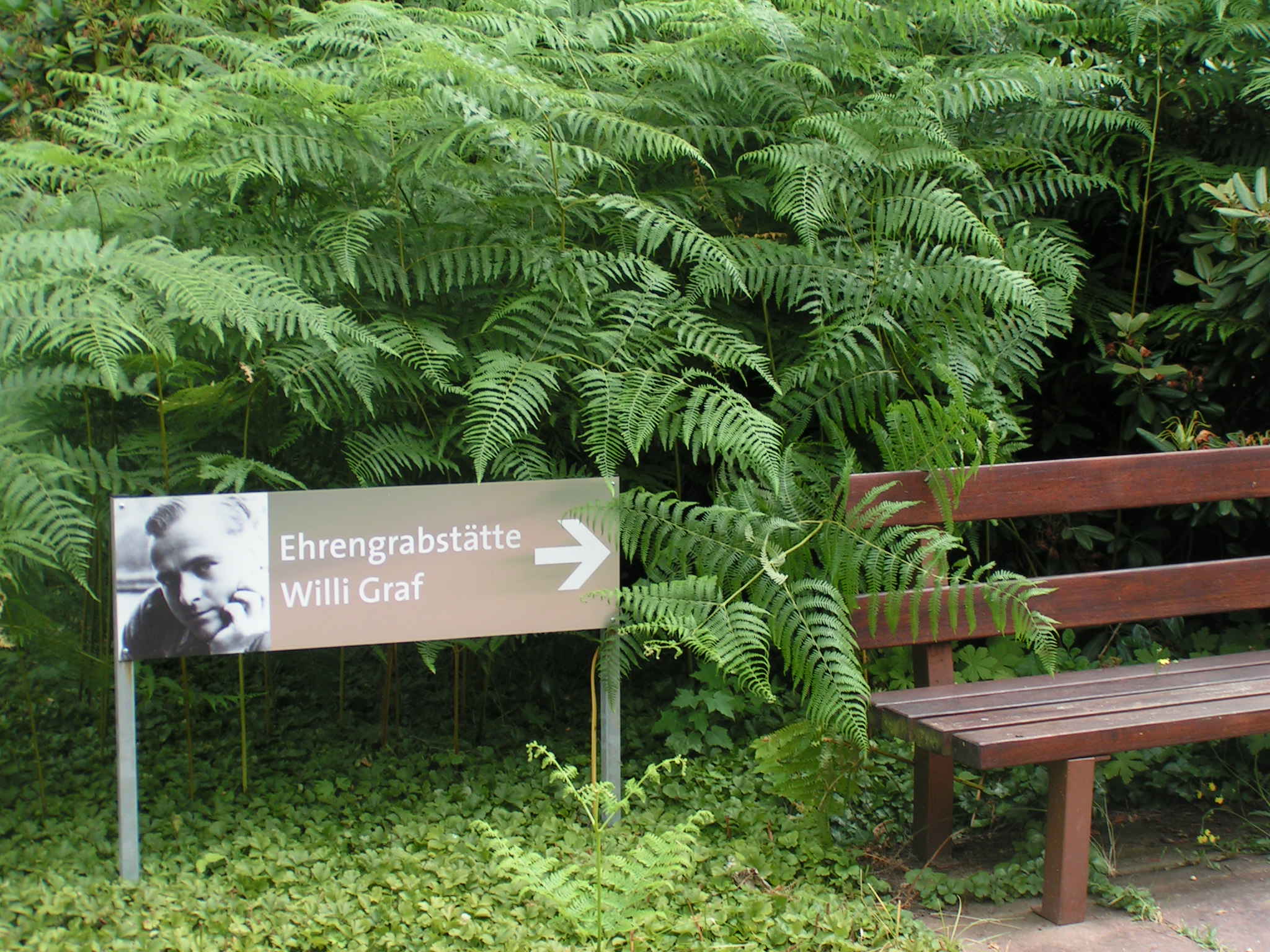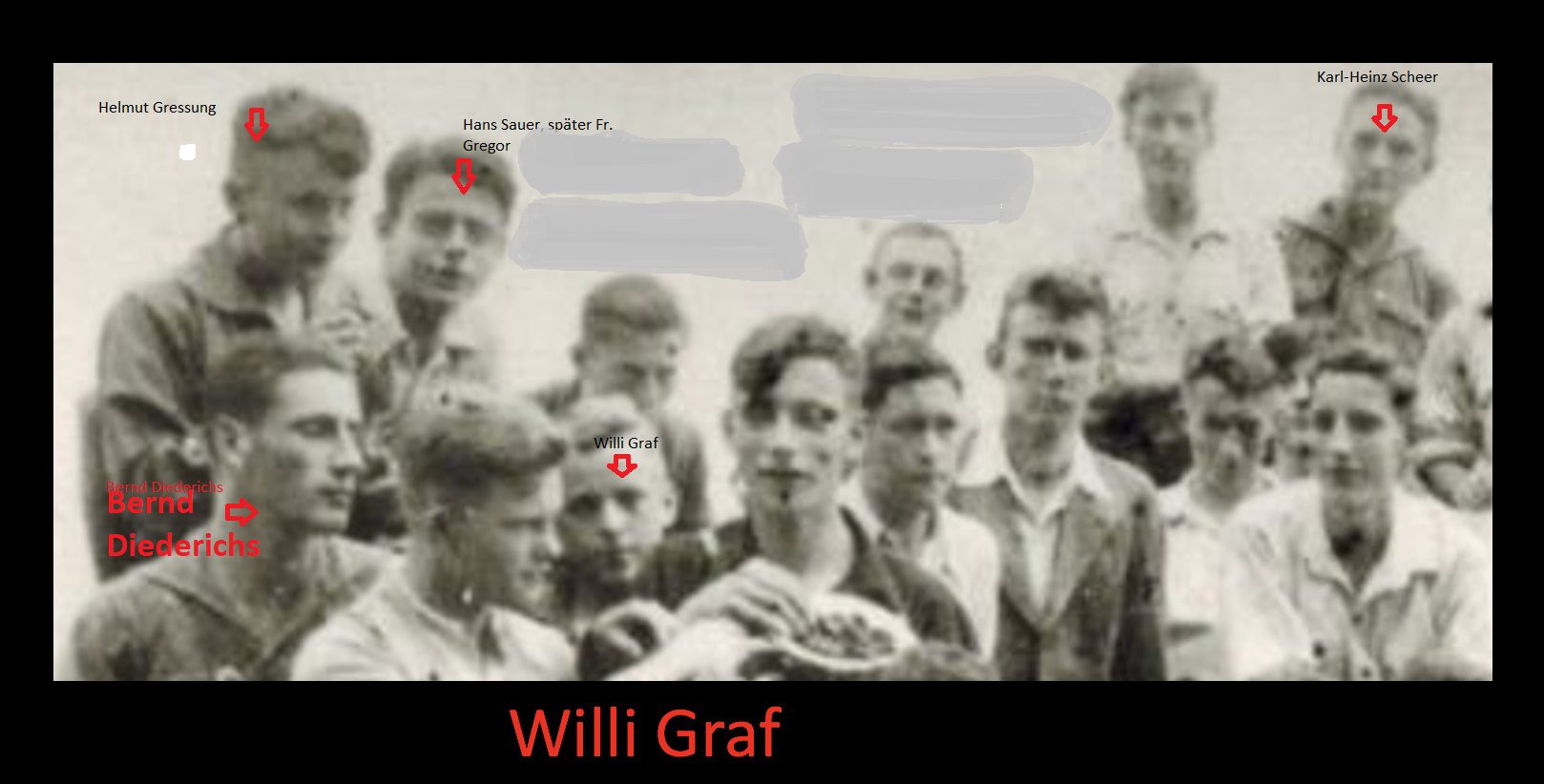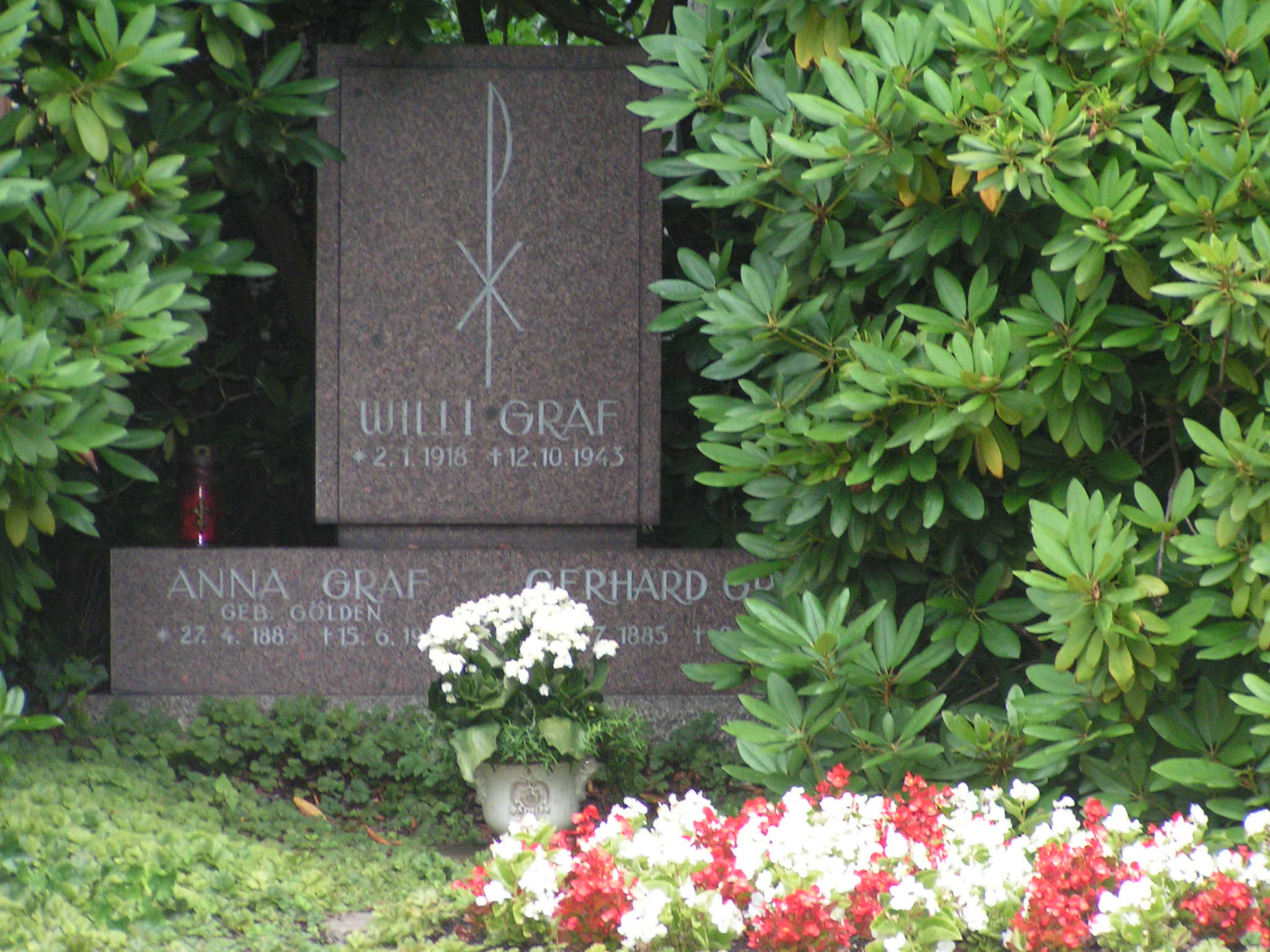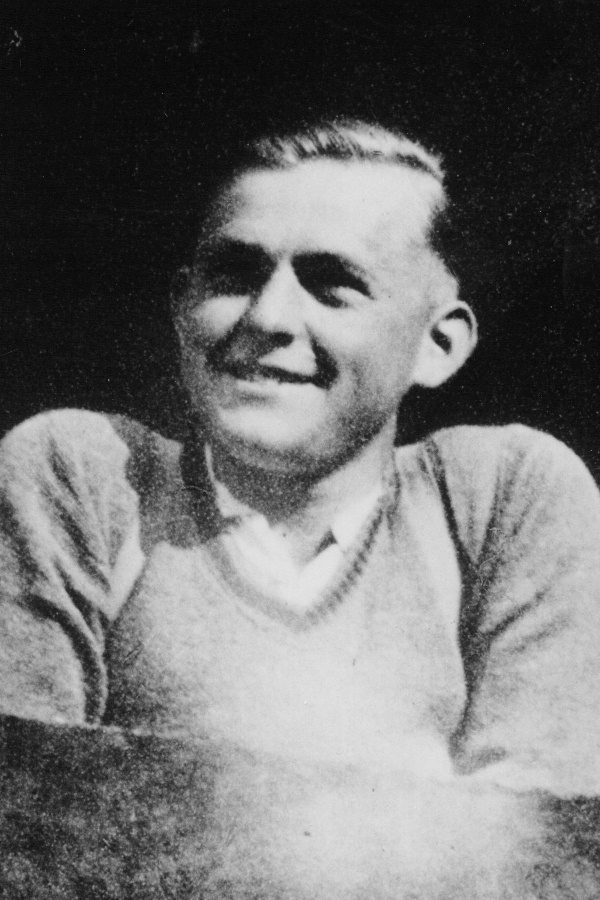
A photo of Willi Graf taken in 1937 by his childhood friend, Fr. Helmut Gressung.
Willi Graf always said he was prepared for death, but he loved life.
As a blond-haired, blue-eyed German student, he fenced, he swam, he sang in the Bach chamber choir, he enjoyed good wine and he loved his family — at least that is what history tells us. He was only 25 years old when he bravely faced execution Oct. 12, 1943, for his activities as a member of the White Rose — a nonviolent student resistance group in Nazi Germany.
What was it that made Graf, a Catholic, take this unpopular and lethal course of action? Educator and researcher Stephani Richards-Wilson first posed this question more than 10 years ago. Now it’s her mission to share the answer — and Graf’s story.
A lay Franciscan associate with the School Sisters of St. Francis and a business professor at Alverno College, Richards-Wilson, who holds a doctorate in education with an emphasis in leadership studies from the University of San Diego and a Ph.D. in German literature from the University of Wisconsin-Madison, has authored the only dissertation in the English language about Wilhelm “Willi” Graf.
The Archdiocese of Munich and Freising became aware of her research and, in 2017, initiated an investigation into opening a cause for his sainthood. He has since been recognized as Servant of God, the title given to a candidate for sainthood whose cause is still under investigation, prior to being declared Venerable. The Catholic Church in Germany included Graf in a list of martyrs of the 20th century.
This week, on the 80th anniversary of his execution, Richards-Wilson was invited to speak at an international symposium in Munich, Germany, and will present on the topic of her 449-page dissertation, “Willi Graf: The Role of Bildung in His Decision to Resist National Socialism.”
Although the German word “Bildung” is not easy to translate to English, it can be likened to “self-cultivation,” Richards-Wilson said. To this end, her research explores the connection between Graf’s moral courage and the influences that shaped him — both as a student and as a combat paramedic in the German army, before he was executed for his activities as a member of the White Rose.
“Most young men in Nazi Germany, including many of Graf’s friends, did not join the resistance,” Richards-Wilson said. “They knew full well it could cost them their lives and put their families at risk. My research tries to understand ‘Bildung’ — what was in Willi’s mind; what shaped him so that he was moved to resistance. It became clear that his Catholic faith was his prime motivation. He led a sacrificial life and a sacrificial death.”
The symposium is being organized by the Archbishop Ordinariate of Munich in collaboration with the Weisse Rose Institute. Though the purpose of the conference is to provide an overview of the current state of research on Graf and better understand his life, Richards-Wilson also will participate in a canonical interview while she is in Germany.
It was Graf’s own words in letters and diaries that offered a blueprint for Richards-Wilson’s research. He meticulously documented the books he read and concerts he attended, along with other details of his life, as if he knew the information could be useful to a researcher later. Richards-Wilson was surprised and delighted by the volume of information preserved.
“I was very fortunate,” she said. “If you were incarcerated in Nazi Germany, letters were often destroyed or hidden by those who knew you. Those who possessed them risked being linked to the resistance and targeted by the Gestapo. There were many courageous women who hid these letters and diaries.”
The first letter she laid eyes on — and her introduction to Graf — was correspondence he’d sent to his parents when he was awaiting his execution in Munich-Stadelheim prison. At the time, Richards-Wilson was researching Milwaukee-native Mildred Fish-Harnack, who was a member of the Red Orchestra resistance group. She was the only American woman executed on Hitler’s direct orders.
“I could tell he was a fellow Catholic by the way he talked about forgiveness,” Richards-Wilson said. “He said he was sad to embarrass his family (by being executed for high treason), but assured them death is not the end.”
Richards-Wilson connected with the fellow Catholic immediately, seizing the opportunity to make him the focus of her dissertation. She dove headfirst into all Graf had written, as well as the books and spiritual essays he referenced in his diaries.
“He filled his head with the insights and provocations of authors who were critical of the Nazi regime,” Richards-Wilson said. “He read the New Testament and authors from around the world, from Shakespeare and Thornton Wilder — our very own Wisconsin author — to Fyodor Dostoyevsky and Romano Guardini.”
In his teenage days, he refused to join the Hitler Youth required of all boys 10 and older. He distanced himself from former classmates who did and joined Catholic youth groups instead. He read outlawed books and publications.
“When he was 15 years old, he recorded a bible verse that shaped the rest of his young life,” Richards-Wilson said. “Be doers of the word and not hearers only, deluding yourselves.” (James 1:22)
In addition to exhaustive reading, and attending Holocaust seminars, Richards-Wilson’s research included spending six weeks in Germany. She traveled by train, from city to city and archive to archive, in search of Graf. He was easy to find in his home country.
She saw his childhood home and the St. Johann Basilica where he was an altar boy, both in Saarbrücken. Memorial plaques are located in the church and outside his home. In 2018, a church bell was installed in the Catholic youth church of eli.ja, located in Saarbrücken. It is rung for three minutes by hand every day at 5 p.m., the time it took for Graf to leave his prison cell until the time he was beheaded. The Catholic youth church and local schools that bear his name celebrate school Masses in his honor on Tuesdays. Richards-Wilson also visited the University of Bonn, where Graf initially studied medicine before he was drafted into the Wehrmacht army at the start of the war in 1939. He was deployed twice to the Russian Front, where he witnessed crimes against humanity and the brutality of war. He was able to resume his studies in 1942 at Ludwig Maximilian University of Munich, where he continued his education as a student soldier. It was there that he met the other members of the White Rose group. Memorial plaques and a permanent exhibit honor Graf as well as the other members inside and around the university.
“His primary role was to expand the circle. He traveled by train, often at night, with a duplicating machine and flyers to recruit friends from his former youth groups,” Richards-Wilson said. “This was extremely dangerous, given these were treasonous words and he had to pass police checkpoints. Four of his friends agreed to help.”
While well-known in Germany — many streets and schools bear his name and a bust of his likeness can be found in the city hall of Saarbrücken — Graf is less familiar to Americans, despite his association with the White Rose.
Richards-Wilson’s dissertation advisor at the University of Wisconsin-Madison, Dr. Marc Silberman, Professor Emeritus, Department of German, Nordic and Slavic Studies, noted that although there have been other book-length studies on the White Rose group, Graf usually is on the periphery in these narratives.
“Richard-Wilson’s work is important because it is the first book-length study in
English on Willi Graf,” he said, “and, moreover, it is based on historical documents and archival findings otherwise unknown in the English-language scholarship of the White Rose resistance group.”
Richards-Wilson’s research was funded by Ludwig Maximilian University of Munich, the German Academic Exchange Service, the University of Wisconsin-Madison, the Holocaust Educational Foundation of Northwestern University, the University of Bonn, Marquette University, the Modern Language Association, and the Andrew W. Mellon Foundation. Her presentation this October is being sponsored by the Archdiocese of Munich and Freising as well as the White Rose Institute.
“Most of the people who know of Willi Graf are German, or academics concerned with historical research on the Nazi resistance,” Richards-Wilson said. “Willi belongs to German history, but he also belongs to Catholics. I truly believe without his faith, he could not have done what he did.”
You can read an article by Dr. Richards-Wilson about Willi Graf at:
You can listen to a podcast interview with Dr. Richards-Wilson at Fountains of Carrots podcast:

Stephani Richards-Wilson

